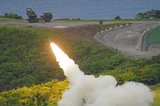Vueling reports load factor rise in February traffic figures
Vueling has announced its traffic statistics for February 2010 featuring a 4.5 percentage point increase in the seat load factor.
The airline carried 685,224 passengers in February, 102.4% more than the 338,589 carried the same month one year earlier, partially resulting from its merger with clickair in July 2009.
Vueling’s revenue passenger kilometres (RPKs) totalled 594,627,000 in February, compared with 306,157,000 last February, a rise of 94.2%. Capacity, however, only increase by 81.9% to 831,212,000 available seat kilometres (ASKs) from 456,942,000, thus creating the 4.5 percentage point load factor increase.
The carrier operated 5,349 flights in February, a 90.1% increase on the 2,814 flown in February 2009.























